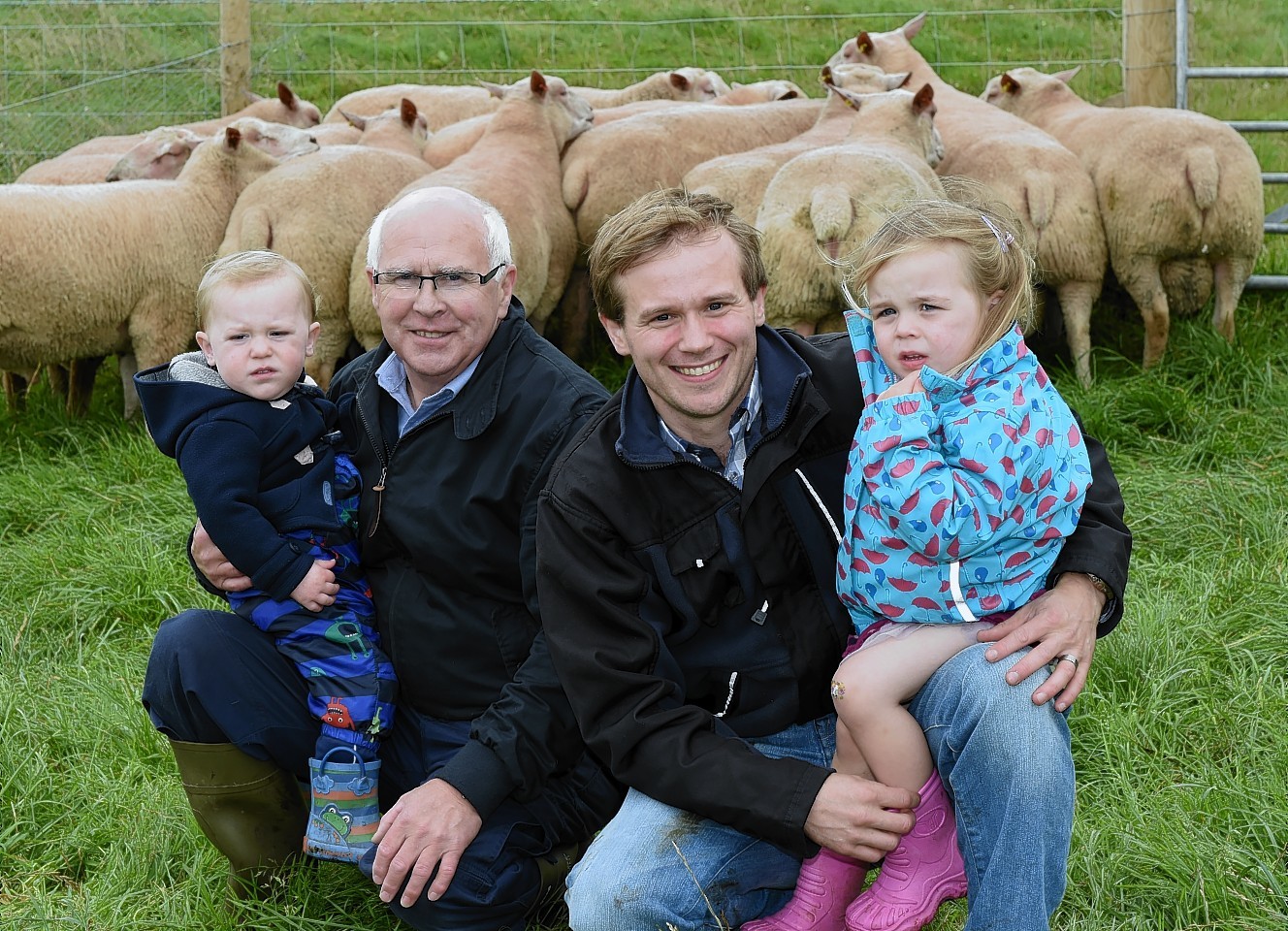Breeding real sheep for real farmers is the aim for one north-east Charollais breeding family.
The Davies family, who farm around 120 acres at Hillhead Of Cannahars near Belhelvie, Aberdeenshire, have been breeding Charollais sheep for 30 years.
At the beginning the family didn’t always send stock down to Kelso but in the past five years taking sheep to the sale has become a key part of the farming enterprise.
The farm is run by Andrew Davies and his parents Howard and Catherine.
Andrew is married to Joy and the couple have three children – Lyla, 5, Ailsa, 3, and Ryan, 1.
Farming is Andrew’s passion but not his full-time job; he works offshore on rotation for Shell, leaving day-to-day management of the sheep in the hands of his father when he is away.
The flock, which goes by the Cannahars prefix, currently stands at 100 breeding ewes.
Andrew says his father dabbled with other breeds in the past but chose to stick with the Charollais because it is an easy breed to look after.
“Pedigree breeds can often be hard to lamb but they (Charollais) are easy to look after,” said Andrew.
“People often criticise them because they are not hardy, but because we lamb them inside we don’t see that. We believed in the breed. They will grow as fast as most Suffolks and I think they would match any Texel in growth rates plus they are much easier to lamb.”
He said the flock is lambed in two batches – once in December to produce ram lambs for sale the following September and then again in April to produce shearling for sales the following year.
“Both the lots are lambed inside. The April-born ones are lambed and sent straight outside and treated as commercial sheep could be right up until when the grass grows until at the end of the year,” said Andrew.
“They are real-world sheep – our shearlings are as naturally dealt with as we can.”
He said the family will typically sell around 30 ram lambs and 30 shearlings every year.
And this year four ram lambs and 12 shearlings are entered for Kelso, with most of the remaining ram lambs set to be sold at Thainstone and the shearlings at both Thainstone and Huntly.
So what does the family look for when breeding sheep?
“Growth rate is the number one priority, and they have got to be correct as in good mouths, good feet and a good back-end,” said Andrew.
He said the flock produced around 80 lambs every year and any that were not kept for breeding or sold as rams would be finished on the farm and sold fat.
“We have sold some gimmers and ewe lambs and in the last couple of years we have been exporting to Germany – there’s quite a good market there,” added Andrew.
Performance recording has become an important part of the enterprise with more and more buyers studying Estimated Breeding Values (EBVs) ahead of buying stock.
Andrew said: “We started recording for EBVs in 2007 and we now take it quite seriously. It takes a while until you build up confidence in your figures, but we believe in it, especially with the shearlings because they are born naturally and they are reared naturally.”
As part of the recording process, which is carried out by Signet, lambs are scanned for back fat and muscle depth as well as being weighed. “The recording gives you a snapshot of what the sheep was like when he was ready to go fat,” said Andrew.
He said EBVs were more important to buyers at Kelso, as well as having sheep which are well-grown, long and with tight skin.
“But at Thainstone they like good head cover,” said Andrew, explaining that each market attracted different types of buyers.
So what does the future hold for Cannahars Charollais sheep?
Andrew said: “I’m going to continue to produce sheep that are designed for the market, ready to work and will continue to work for a number of years. They are practical sheep.”
